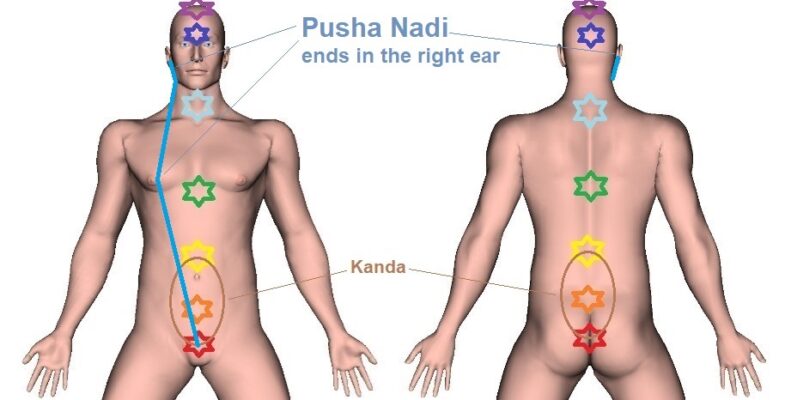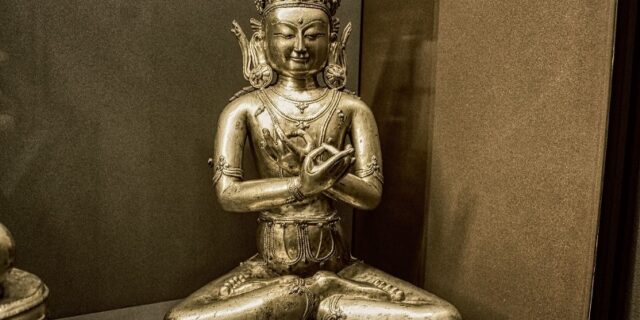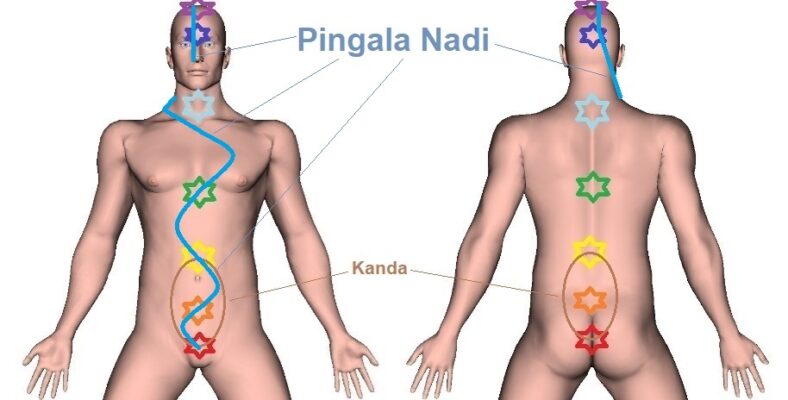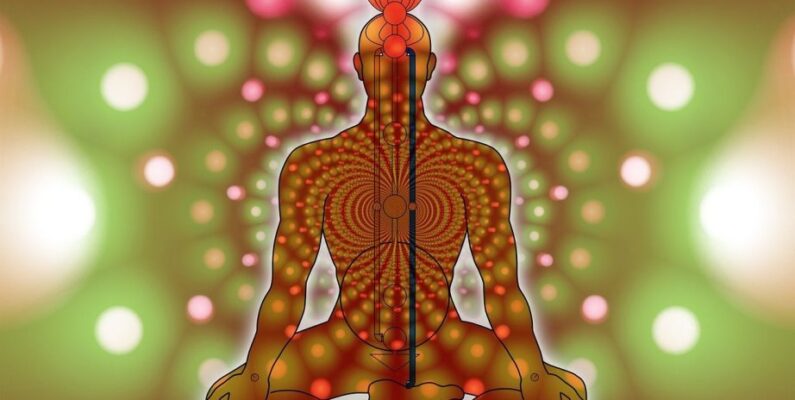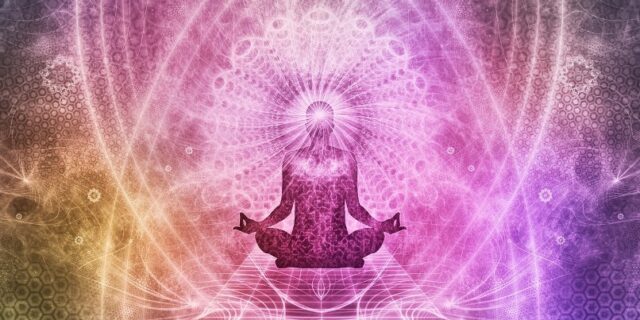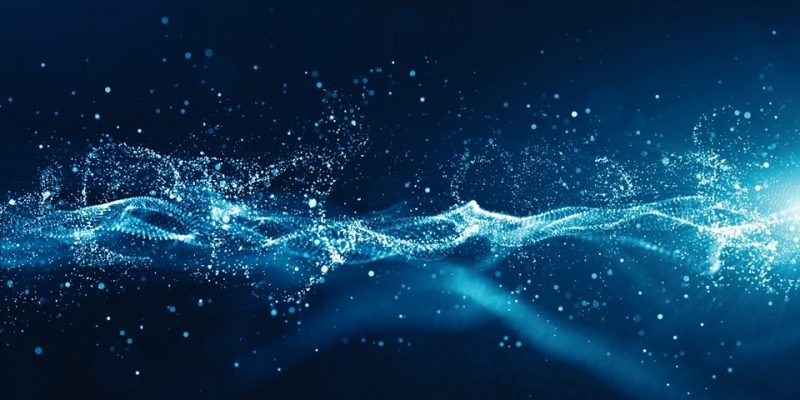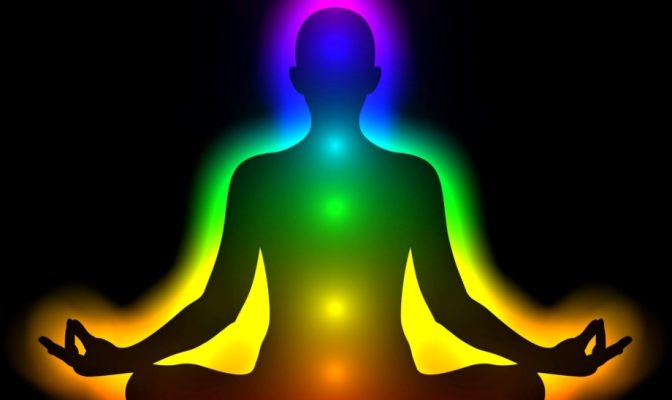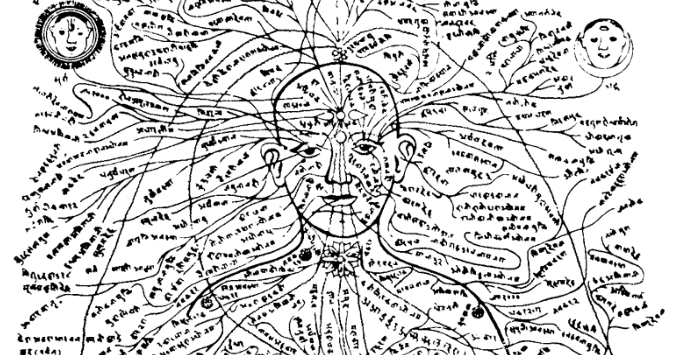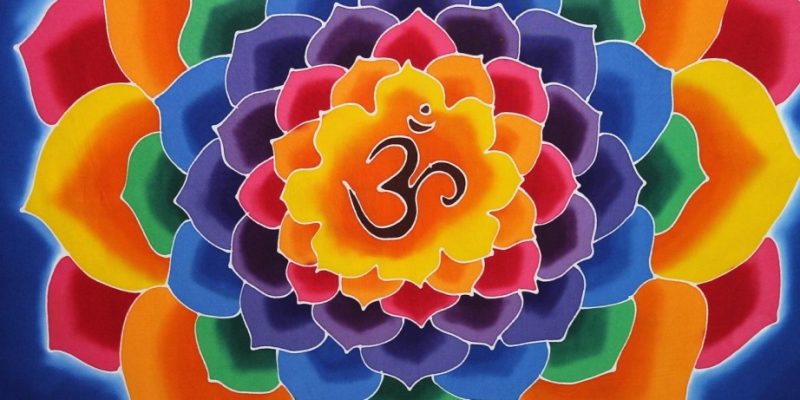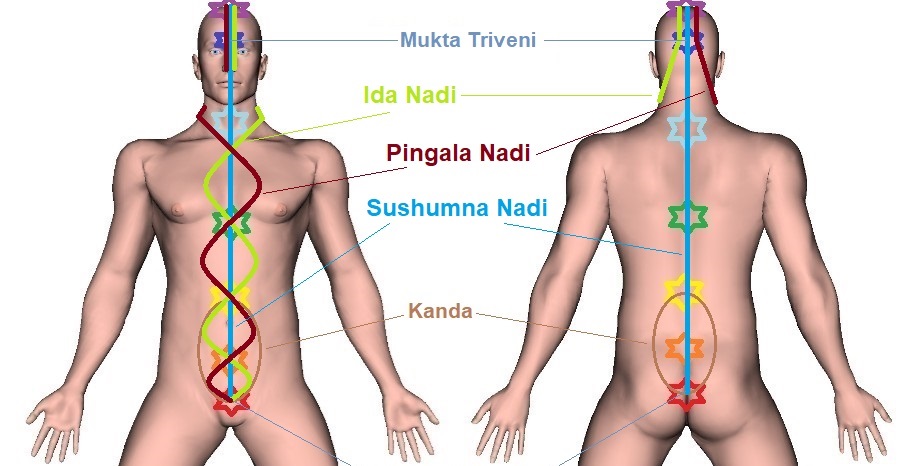
In Yoga philosophy and practices, the main focus with regard to working with the Nadis often lies on the Ida, Pingala, and Sushumna Nadi Energy Channels, which together are called the Trividha Nadis.
And indeed, the vast majority of ancient and authoritative Indian sources on Yoga comment that those three are the most important Nadis.

For instance, in the Shiva Samhita it’s written that “Among these Ida, Pingala, and Sushumna are the chief.”
Another example, taken from the Darshana Upanishad: “Of these, three are more important. Among the three, one is the most important. That is Susumna known as Brahma-Nadi as called by the learned.”
By the way, in many Yogic scriptures the Ida, Pingala, and Sushumna Nadi are often named (or described) together as a trinity, an interrelated tri-unity.
For instance, the Dhyana Bindu Upanishad states that: “Ida is on the left side and Pingala on the right side, while the Susumna is in the middle. These three are known to be the paths of Prana.”
Or, as found in the Hamsa Upanishad: “There are two nerve currents, Ida and Pingala, along the spinal column and a hollow canal, Susumna, in the middle.”
And as mentioned in the Hatha Tattva Kaumudi: “These three Nadis — namely Pingalika, Ida and Sarasvati are situated in the middle of the spine.” Note: the name Sarasvati is often used as a synonym for Sushumna Nadi, not to be confused with the actual Sarasvati Nadi.
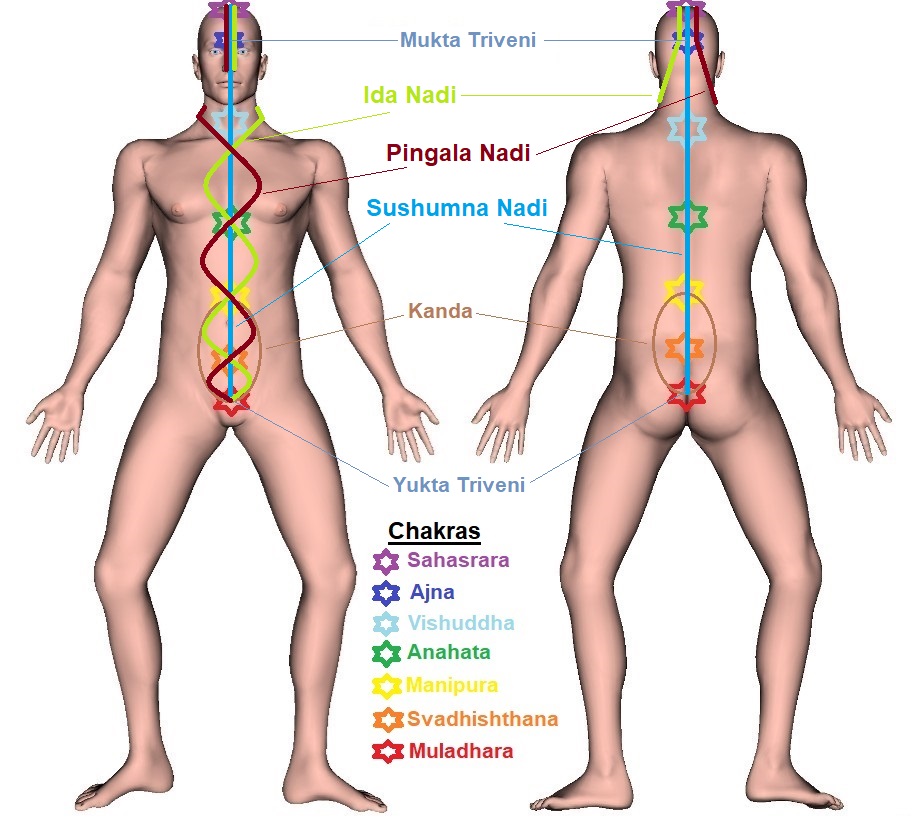
The Trividha Nadis are considered the key or principal Nadis, the most significant of the otherwise fourteen major Nadis. In fact, all other (countless) Nadis are considered subordinate to Ida, Pingala, and Sushumna. Then again, of these three main Nadis, Sushumna is considered the most important Nadi.
Sushumna Nadi (also written as Susumna) is thought to be attached, positioned, or flowing along or in the spinal column, and the Ida and Pingala Nadis are the two major Prana Energy Channels that flow laterally on either side of Sushumna Nadi (being intimately connected to Sushumna). Ida Nadi and Pingala Nadi are typically depicted as being positioned on the left side and on the right side respectively.

Nevertheless, in some depictions Ida and Pingala “whirl,” “spiral,” “twist,” “alternate,” or “circle” around Sushumna Nadi, a bit as one usually depicts a DNA string, a double helix, and in those cases designations of “left side” or “right side” are perhaps somewhat less applicable.
It’s thought that Ida, Pingala and Sushumna meet or cross at the Triveni Point (Triveni meaning “three streams”), also called the Mukta Triveni (Mukta meaning “liberated”), which is at the location of the Ajna Chakra (Third Eye).
An interesting fact with regard to this Triveni Point is that the Triveni Sangam is known as the confluence (meeting point) of the Indian Ganges River (Ganga), the Yamuna River, and the mythical (and invisible) Saraswati River, which are also the nicknames for Ida, Pingala, and Sushumna Nadi.
“The Ida Nadi is Ganga, while Pingala is Yamuna and Susumna is Sarasvati” (Hatha Ratnavali).
Apart from the confluence of the three major Nadis at the Triveni Point, it’s also believed that they merge together below the navel, which is likewise called Triveni Point but then Yukta Triveni (Yukta meaning “harnessed” or “fastened”). Some Pranayama exercises deliberately use this meeting point to circulate breath i.e. Prana from Ida to Pingala or vice versa, or from Ida and Pingala directly into Sushumna, and so on.
The three Nadis also represent three interconnected forces, described in several ways, each having different complementary properties, characteristics, or energies.
As such, you will often see that Ida, Pingala, and Sushumna are compared to having qualities like:
- passive, active, and neutral;
- female, male, and unspecified;
- Yin, Yang, and neutral;
- lunar, solar, undefined;
- Shakti, Shiva, and Brahma;
- subjective, objective, non-dual;
- Sat, Chit, Ananda;
- Tamas, Rajas, and Sattva.
In Yoga, an important goal is to purify, cleanse, control, harmonize and/or balance the opposite (or complementary) Ida and Pingala Nadis through Yogic exercises — such as doing Pranayamas, Mudras, or Asanas — which is thought to then result in the opening or activation of Sushumna Nadi.
The latter is believed to be essential for the sacred Kundalini Energy to be awakened and rise upwards through the Sushumna Nadi Channel, which then supposedly results in activation of all the Chakras and attaining Spiritual Enlightenment, Samadhi, or Moksha.
This last, most sought-after step by Yogis is also described as the Spiritual Union of Shakti and Shiva.






